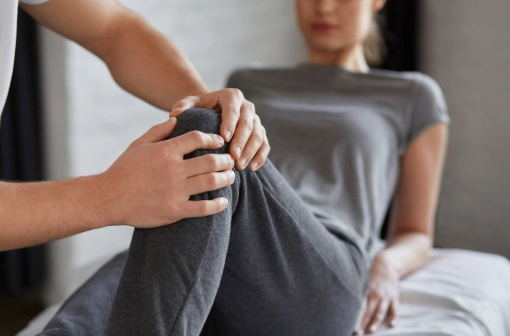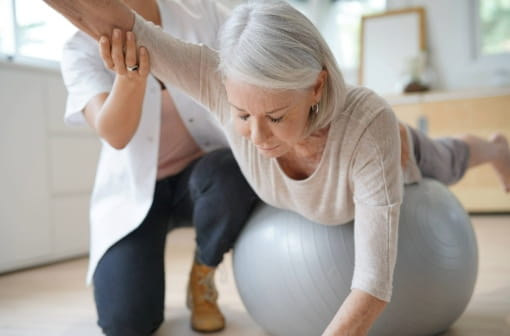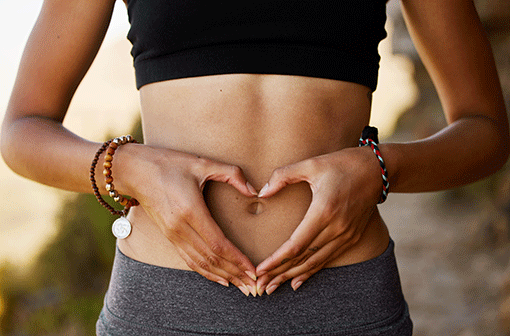“Women do have some protection from oestrogen prior to menopause. It’s why men tend have a higher risk of cardiovascular disease, because women have hormonal protection, but once you're postmenopausal, your risk increases.”—Dr Tessa King, Specialist Women’s Health GP, Jean Hailes for Women’s Health
Key points
- The 50s are a time when women in particular should start thinking more seriously about the risks of high blood pressure and cardiovascular disease.
- It’s important for women in their 50s to be screened for osteoporosis, as loss of bone density can lead to a range of significant issues.
- Cancers, gastrointestinal issues, musculoskeletal conditions, and eye, teeth and foot problems can also increase during this decade—but screening tests can help to identify issues early.
For many Australians, the 50s is a time of relative stability on many fronts. Perhaps your child-rearing days are behind you, and you’ve got more time to pursue hobbies or make a dent in the bucket list. Or you might be settled into your career now that you’ve climbed your way to a great role.
Healthwise, your 50s can indeed be fabulous—but you do need to keep a check on common ailments that can creep up during this decade, especially if you’re a woman. We asked our experts what to expect, so you can keep on top of your health and wellbeing.

High blood pressure and increased cardiovascular risk
When you hit 50, it’s time to take things to heart—after all, it’s a decade when postmenopausal women in particular should start thinking more seriously about the risks of high blood pressure and cardiovascular disease.
“Women do have some protection from oestrogen prior to menopause. It’s why men tend have a higher risk of cardiovascular disease, but once you're postmenopausal, your risk increases,” says Dr Tessa King, Specialist Women’s Health GP at Jean Hailes for Women’s Health.
Tessa’s tip? It’s easy to get your blood pressure checked by your GP, and they can “assess your overall cardiovascular risks, by checking your cholesterol levels and fasting glucose” at the same time. It’s important to do so, as leaving these things untreated can increase your risk of heart disease, heart attacks and strokes, she says.
“Your blood pressure can be reduced through weight loss and eating a healthy diet, increased fitness, stopping smoking, and in some cases medication.” As a bonus, these changes can help prevent a whole range of other health conditions too.
The aftermath of menopause
Before you start celebrating the end of those menopausal symptoms and making it through to the other side of “The Change”, there’s unfortunately a bit of a catch. According to Tessa, research shows 50 percent of postmenopausal women experience some form of incontinence, and the same percentage report vaginal dryness—with the incidence of urinary tract infections going up in this age bracket too.
“These issues might be more common after menopause especially in a woman's 50s and 60s. However, the good news is treatment is available so talk to your health professional if you experience genital or urinary issues,” adds Tessa.
.png)
The importance of healthy bones
Radeyan Sazzad, Manager—Health Management at Australia Unity, says it’s important for women in their 50s—especially those who are postmenopausal—to be screened for osteoporosis. Many people show no symptoms for this bone loss condition until they experience an injury, such as a bone fracture.
Osteoporosis can lead to significant problems, including height loss, curvature of the spine or a change in posture, ongoing back pain and muscle spasms. “It’s why osteoporosis screening is really recommended,” he says. “Treatment includes medication, a healthy diet and weight-bearing exercise to help prevent bone loss and strengthen already weak bones.”
Keep an eye on your general health
“In the 50s, cancer-related treatments become more prevalent. For females, we see a pick-up in breast surgeries and treatments for breast cancer, along with chemotherapy procedures,” says Radeyan.
There’s also a “a big jump in gastrointestinal procedures,” he says, “so colonoscopy, endoscopy— people having issues with their digestive system is something that we see in our data.” Musculoskeletal conditions also increase, with more knee- and back-related surgeries, while treatments by optometrists, chiropractors and dentists also increase. “An interesting one is that we see a big jump in podiatry use from the 40s to 50s, with many females experiencing foot-related issues.”
General bowel screening also kicks in at this age through the National Bowel Screening Program. “You need to be doing everything you can to catch things at their earliest stage before they progress to serious disease.” This means being aware of your risks, taking all of the recommended screening tests, and working with your healthcare team (including your health insurer) to make changes and reduce potential suffering later, explains Radeyan.
What happens to your health in your 50s isn’t a significantly different to your 40s, says Radeyan. But like the 40s, the 50s can be a busy time with career, caregiving or other commitments meaning we can tend neglect our physical and mental health. It’s important, though, to be aware of your risks and health priorities, so you can keep enjoying life into your 60s—and beyond!
In your 50s? Watch for these common issues

Your 50s may be fabulous, but when it comes to your health, there are a handful of common issues that can start to creep up on us. If you think you may be at risk, please talk to your healthcare professional.
- Back pain: Around one in four Australians in their 50s suffer from back problems.
- Cancer: In 2022, around 23,000 people aged between 50 and 59 were diagnosed with some form of cancer. Of these cases, 4,523 were breast cancer, 3,124 were prostate cancer and 2,803 were melanoma.
- Cardiovascular disease: Just under 9 percent of Australians aged 55 to 64 have been diagnosed with heart, stroke or vascular diseases—a significant increase from 3 percent of Australians aged 45 to 54.
- Eye health: Just over 92 percent of Australians aged 55 to 65 have a long-term eye condition.
- Incontinence: Around 50 percent of postmenopausal women have some form of incontinence.
- Osteoporosis: The risk of osteoporosis increases significantly in your 50s and 60s: while 2.7 percent of Australians aged 45 to 54 have osteoporosis, 8.2 percent of people aged 55 to 64 have the condition.
Disclaimer:
Information provided in this article is not medical advice and you should consult with your healthcare practitioner. Australian Unity accepts no responsibility for the accuracy of any of the opinions, advice, representations or information contained in this publication. Readers should rely on their own advice and enquiries in making decisions affecting their own health, wellbeing or interest.


